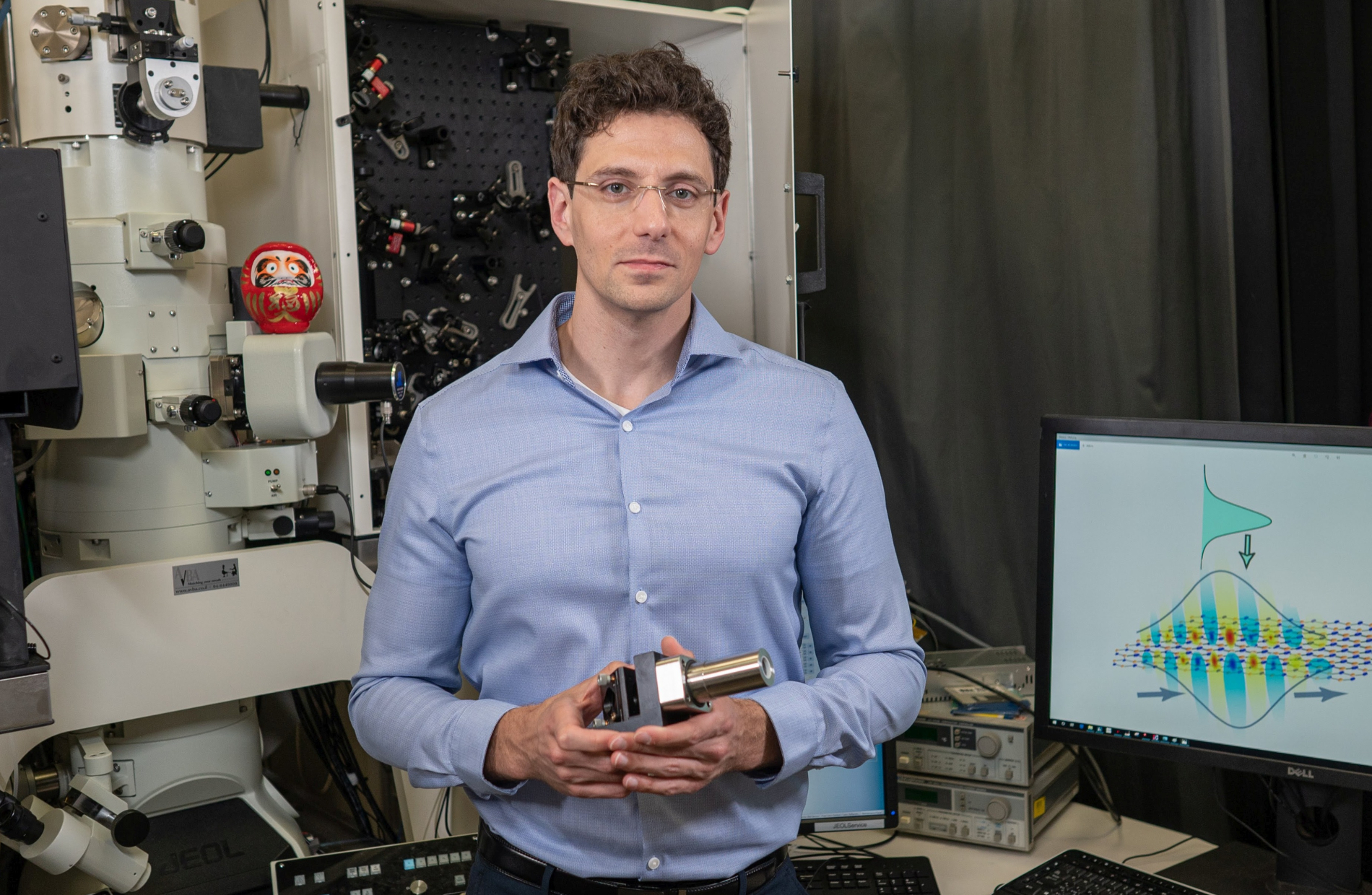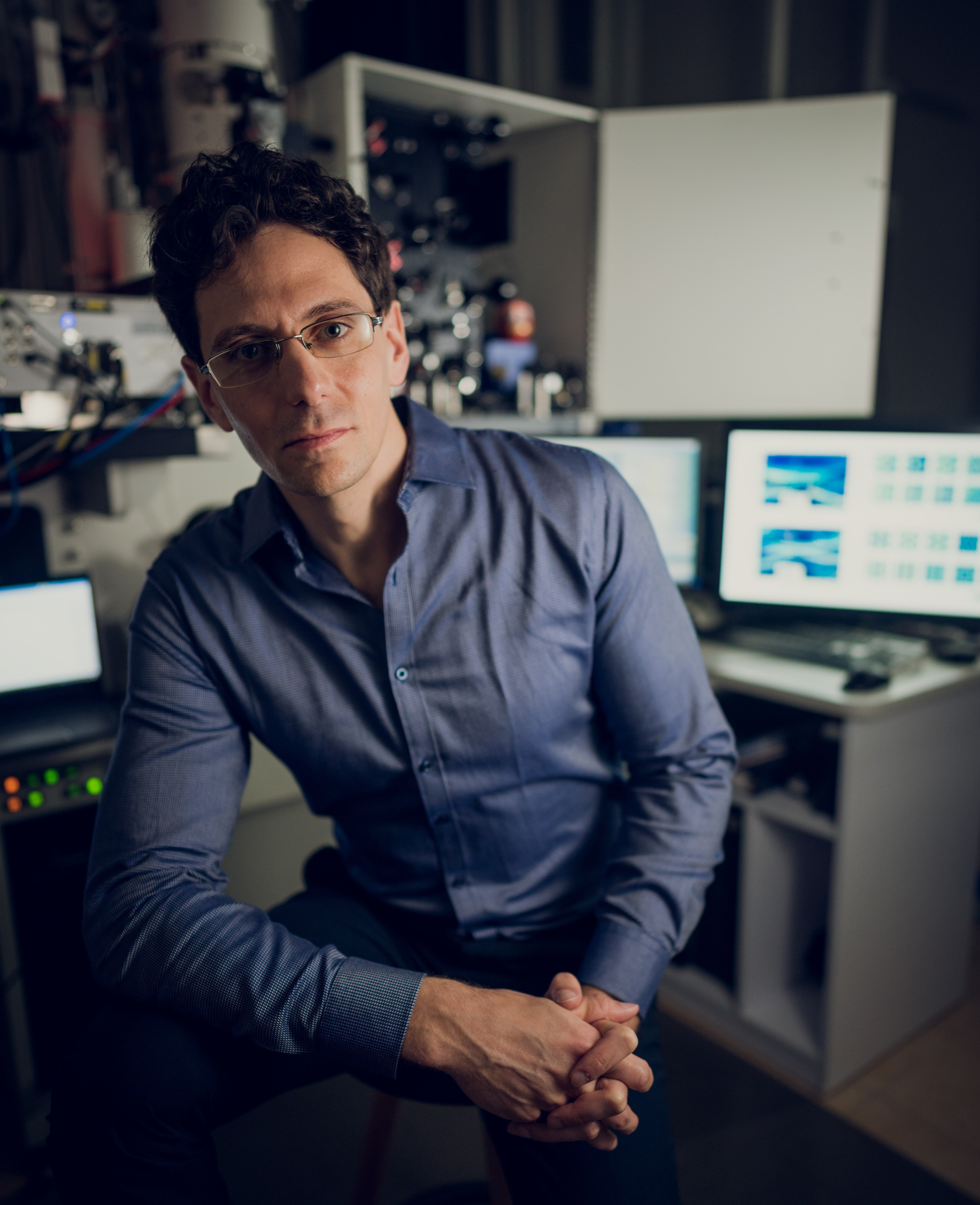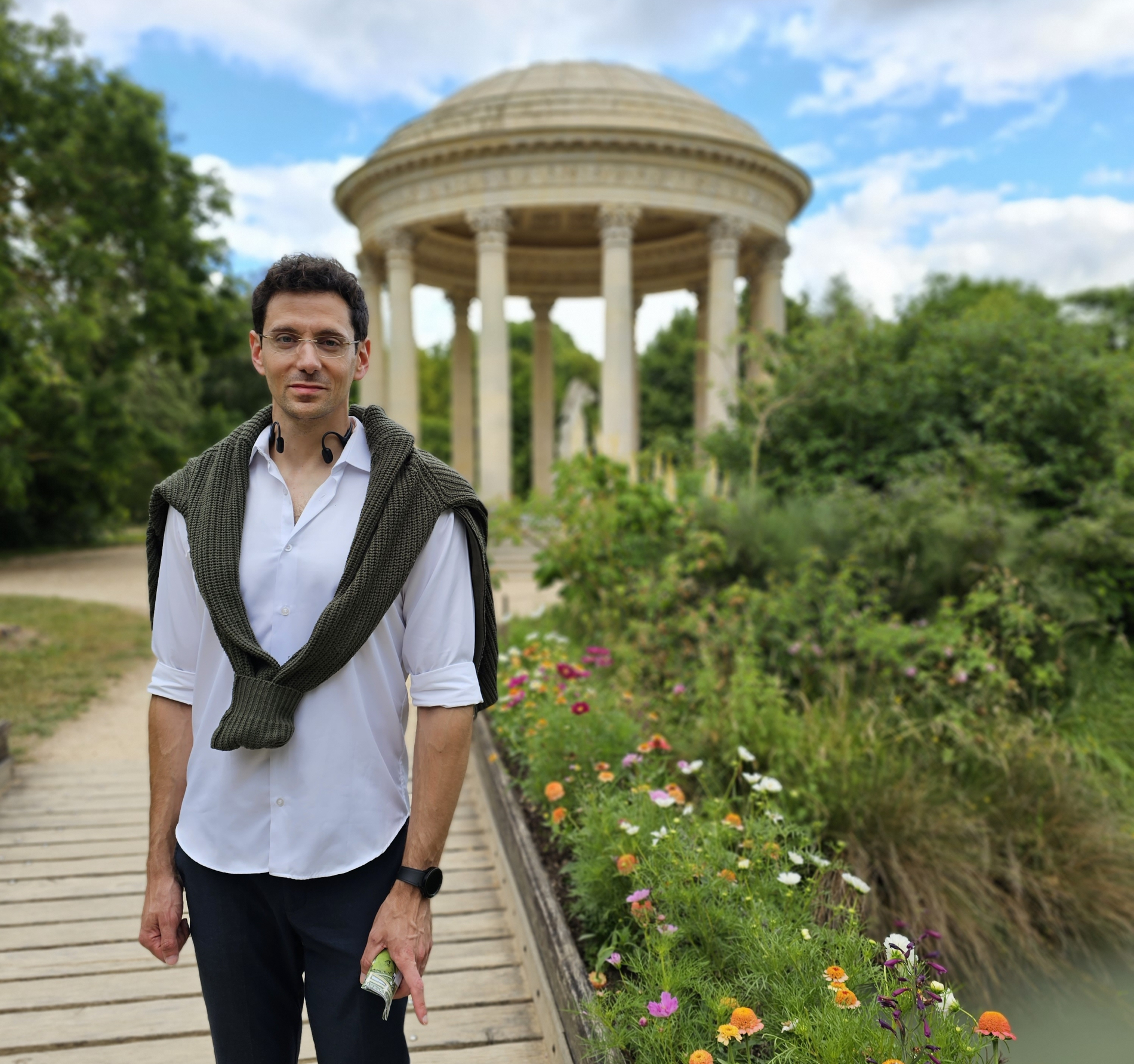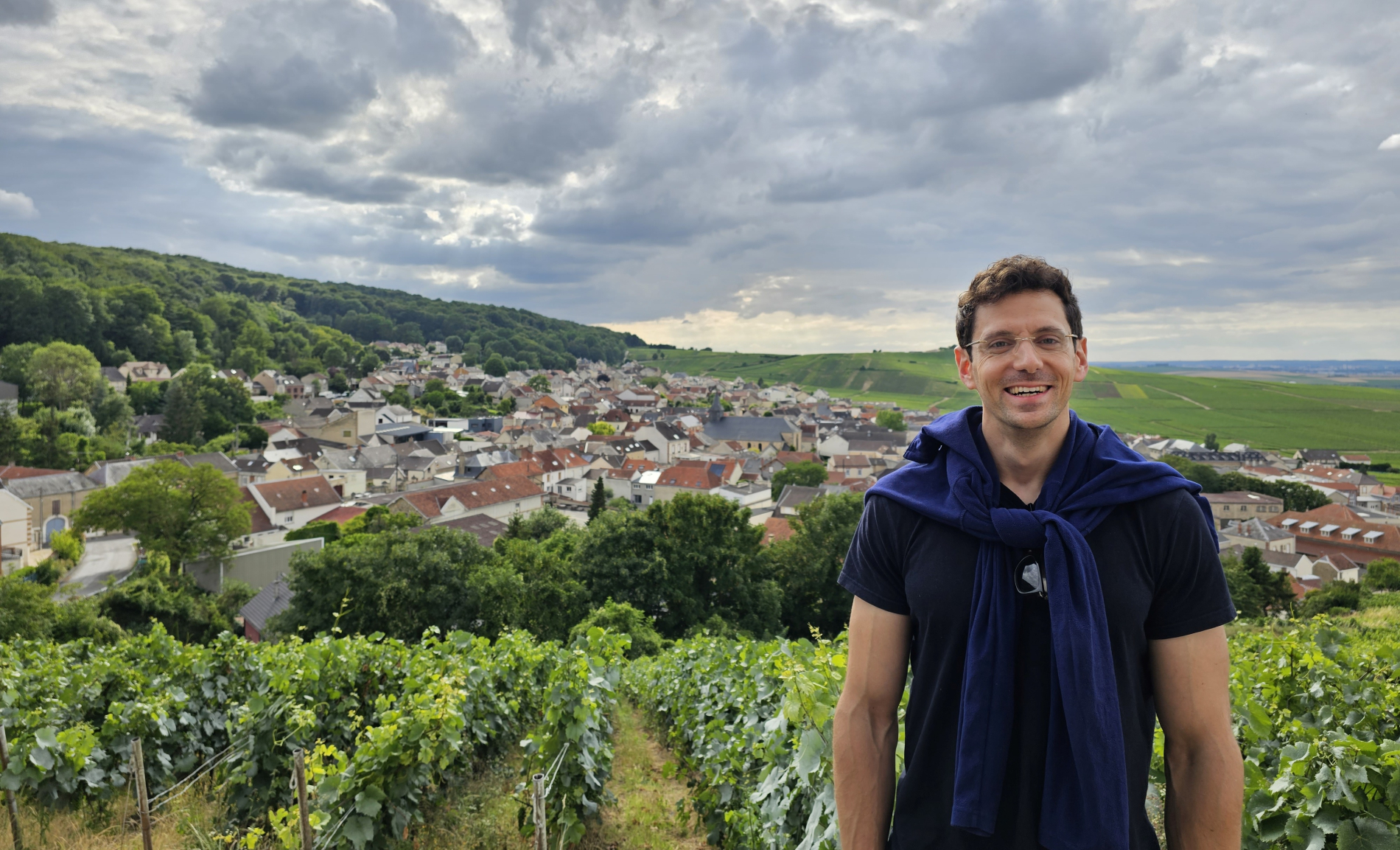YOUR BROWSER IS OUT-OF-DATE.
We have detected that you are using an outdated browser. Our service may not work properly for you. We recommend upgrading or switching to another browser.
Date: 13.06.2024 Category: awards, international cooperation, university life

What is free electron quantum optics? How does theory mix with practice in the life of a scientist? Why is it worth being open to the craziest ideas and how much does chance mean in life? We invite you to read a conversation with 2023 Lem Prize winner Prof. Ido Kaminer from Technion.
Prof. Ido Kaminer: My research interests constantly branch out to new areas. I currently run two research groups: the AdQuanta group and the Ramanujan Machine group.
In AdQuanta, we pursue research of quantum effects in areas that are often perceived as classical. We introduce quantum optical phenomena into electron microscopy, strong-field optics, and X-ray science.
In the Ramanujan Machine group, we pursue AI approaches to mathematical research, developing some of the first algorithms in the emerging field of AI for science.
Light interaction with free electrons is an exciting domain. Despite being investigated for a century and seen like “an old field”, the last decade has shown a revolution that brought free-electron science to the frontier of quantum optics and nanophotonics. I was one of the first scientists to recognize this potential and I contributed to the rise of this new field, now called free-electron quantum optics.
 My personal path that led me to this field is mostly a chain of coincidences.
My personal path that led me to this field is mostly a chain of coincidences.
My technical background in the field is from my undergraduate, working with Prof. Levi Schächter. My own works on free-electron science started at the end of my PhD with Prof. Moti Segev in a mind-boggling paper on self-accelerating Dirac fermions. The chain of coincidences continued with the first paper from my postdoc with Marin Soljačić and John Joannopoulos at MIT, on the theory of quantum effects in Cherenkov radiation. They gave me the opportunity to start a team as part of their groups at MIT to pursue experiments with free-electron radiation. When starting my lab at the Technion I made the first steps into experiments in the quantum regime of free-electron science.
There were many events of sheer luck and pure coincidence along the way. This experience is why I always tell my students that they should be open minded to new ideas and give a chance to what may seem sometimes like crazy thoughts. You never know what path will lead to the most impact.
As often happens with such experiments, this paper (Science 2021) inspired an entirely new field of even greater importance than the context of the original experiment: strong-field quantum optics.
Let me explain the background to this new field. Over four decades of advancements in nonlinear optics yielded numerous phenomena of attosecond science, leading to the 2023 Nobel Prize.
My works showed that such phenomena are sensitive to the quantum nature of the driving light, breaking a long-held mindset that quantum optics matters only for few-photon processes, whereas high-intensity light behaves classically. These papers are now considered as the inception of a new field of quantum optics with macroscopic numbers of photons.
Check out prof. Ido Kaminer webinar on this new field.
I manage to do both because I had the great luck to have a PhD that combined both worlds. This is thanks to a great research environment at the Technion, and thanks to the mentorship of Prof. Moti Segev, who has made (and still making) enormous contributions in both theory and experiments.
Nowadays, I try to have my students try their hands in both theory and experiments. I am proud to say that some of my first students succeeded in combining both worlds. For example Yaniv Kurman and Raphael Dahan published both experiments and theory papers during their PhDs, and got to very high impact journals in both domains.
The reason I still succeed in running both theory and experiments is that I have excellent students joining my group. My students work in teams and accomplish amazing projects of the greatest complexity, where we combine novel theory concepts and build our own unique setups in the lab.
 It is hard to know what my greatest contribution was without the perspective of time. Let me choose one area where we wrote both theory and experimental papers and where our work already had substantial impact. My lab showed quantum phenomena at relativistic velocities – which is a nontrivial combination.
It is hard to know what my greatest contribution was without the perspective of time. Let me choose one area where we wrote both theory and experimental papers and where our work already had substantial impact. My lab showed quantum phenomena at relativistic velocities – which is a nontrivial combination.
Central to technology from microwave ovens to free-electron lasers, free-electron radiation (and related phenomena such as Cherenkov radiation) has been considered as a classical wave for over a century. My first theory paper on electron radiation broke this paradigm, leading to the first observation of the quantum nature of Cherenkov radiation, shown in my Technion lab. We later showed that electron radiation can even become entangled with the emitting electron. This spurred a series of theory papers by different groups and the first experiment, achieved in my lab, demonstrating quantum features that cannot be explained by treating light as a classical wave.
These works and following ones established the field of free-electron quantum optics.
Looking forward, I believe that creating quantum effects among electrons should be used to build new technology for imaging the quantum coherence of matter. This achievement will contribute back to fundamental science, as such quantum microscopes will let us answer open questions about the role of quantum mechanics in many areas of science that are currently considered classical.
Yes! I grew up reading some of the books by Stanisław Lem. In fact, the Hebrew translation of Solaris is much better than the English one since it was translated directly from the original Polish version.
It amazes me to look back at his accomplishment today, with the perspective of years: His most famous work came out even before the first man walked on the moon, and yet, he was still with us as a leading intellectual to comment about how the world has changed after 9/11. Stanisław Lem referred to the war on terror as bringing us from space back to earth.
I love the idea that the award in scientific research was chosen to honor the memory of a great writer like Stanislav Lem, who is especially known for his great creativity. Creativity was and still is the one trait we appreciate the most in scientific discovery.

I visited Poland as a child once, and I am looking forward to visiting again and to experience the culture of modern Poland and meet the scientific community. I worked with a few Polish scientists over the years. I should find more opportunities for such collaborations,
This is a tricky question as science is also my hobby. I like to do many types of sport.
I also enjoy traveling, especially traveling to new places. Some of my best memories are from wild places with immense natural beauty, from mountains to deserts, the more novel the scenery the better. What I love the most about traveling is the chance to experience something that is utterly new and surprising: from new cultures and unexpected pieces of history to ultramodern environments.
I got married last year, and love spending time and traveling with my wife, Noam.
Our site uses cookies. By continuing to browse the site you agree to our use of cookies in accordance with current browser settings. You can change at any time.